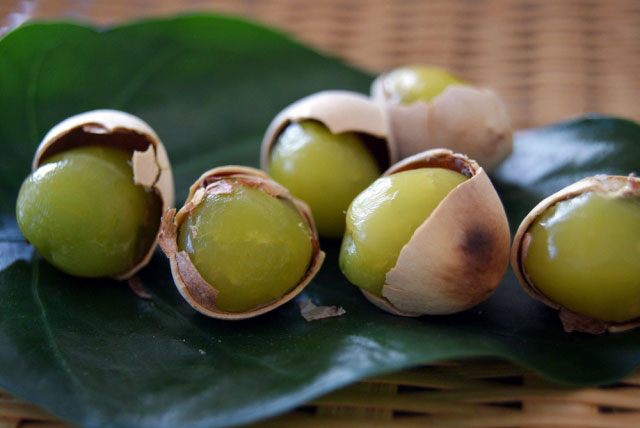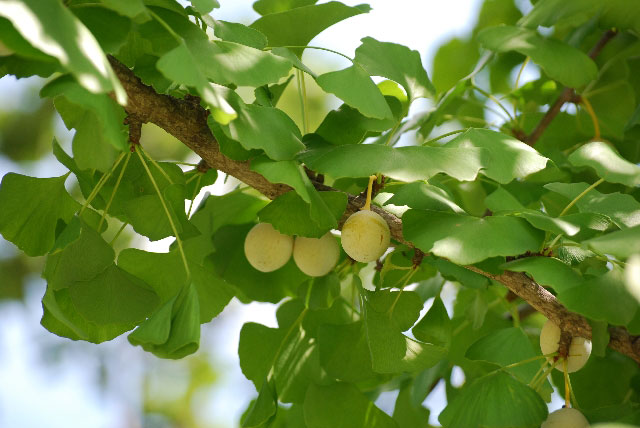Gin-nan or ginkgo nuts ripen in autumn, and this month, fans around the world will be picking them straight from the trees to bring them to their tables.

Patience is required to prepare ginkgo nuts. Fresh nuts are encased in three layers – a pulpy, yellowish outer covering; a hard, smooth white nut case; and a thin, brownish inner skin. And that’s not the only protection around the nuts! The pulpy outer covering is extremely pungent, likened to durian fruit in intensity and odor. Avid enthusiasts undertake the challenge of removing the smelly outer covering, cracking open the nut case and then scrubbing the inner skins off while the nuts are soaked in hot water to get to the nut within. (The not-so-avid can definitely find fresh, hulled nuts at Asian markets around the world.) The inexperienced novice will certainly come away with skin peeling from their hands and an overfull stomach, as only 4-5 nuts should be eaten at a time (unfortunately, ginkgo poisoning is a thing).
 Gin-nan grow on female ginkgo biloba trees, which are prized not only for their fruit but for their beautiful and unique foliage. In Tokyo, ginkgo trees turn a splendid shade of gold during the fall season, and locals and tourists alike visit the “Ginkgo Avenue” or Icho Namiki near the Aoyama-Itchome Station and in Showa Memorial Park. Each location is planted with four rows of ginkgo trees, forming broad avenues overhung by leafy branches dappling shade. A ginkgo tree is also at Sensoji Shrine in Asakusa, the oldest temple in Tokyo.
Gin-nan grow on female ginkgo biloba trees, which are prized not only for their fruit but for their beautiful and unique foliage. In Tokyo, ginkgo trees turn a splendid shade of gold during the fall season, and locals and tourists alike visit the “Ginkgo Avenue” or Icho Namiki near the Aoyama-Itchome Station and in Showa Memorial Park. Each location is planted with four rows of ginkgo trees, forming broad avenues overhung by leafy branches dappling shade. A ginkgo tree is also at Sensoji Shrine in Asakusa, the oldest temple in Tokyo.
The raw nuts, once harvested from the trees and deskinned, are white in color but turn pale green when cooked. In Japan, the nuts are skewered and grilled, kushiyaki-style and more commonly found in chawanmushi, a savory egg custard appetizer. The true connoisseur loves these nuts simply roasted, warm and fragrant on an autumn day.
Leave a Reply